Discover the vibrant world of seafood jambalaya with our comprehensive guide to crafting the perfect dish. Whether you’re a seasoned chef or new to the kitchen, seafood jambalaya offers a delightful blend of flavors that make it a favorite in New Orleans cuisine. From choosing the right ingredients to mastering the cooking process, this article dives deep into the secrets behind creating a flavorful jambalaya. Explore the differences between various seafood options, learn about the holy trinity of ingredients that form the base of every great jambalaya, and discover tips to elevate your dish to new heights. Whether you prefer shrimp, crawfish, or crab, our guide has you covered. Dive in and uncover the art of making seafood jambalaya a family favorite meal!
Key Takeaways
– Two Types of Jambalaya: Discover the distinct differences between Cajun and Creole jambalayas, each offering unique flavors and ingredients that highlight the dish’s versatility.
– Holy Trinity of Jambalaya: Master the essential ingredients—celery, onion, and green bell pepper—that form the flavorful base of Creole jambalaya.
– Shrimp Creole vs. Jambalaya: Learn how Shrimp Creole and Shrimp Jambalaya differ in their preparation methods, sauces, and serving styles, each bringing bold Louisiana flavors to your table.
– Louisiana Cuisine Influence: Understand how these dishes showcase Louisiana’s rich culinary heritage, blending bold spices and creative cooking techniques.
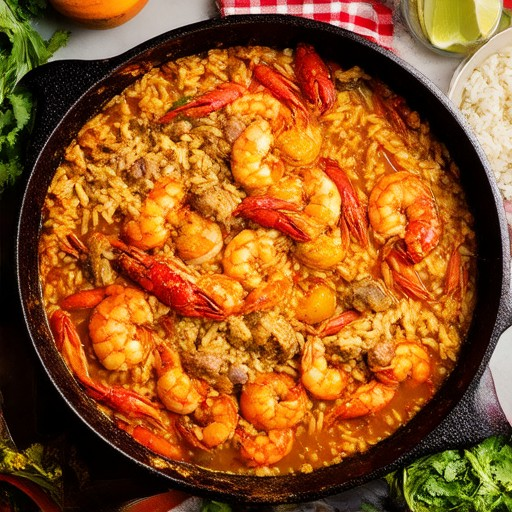
What Seafood Do You Put in Jambalaya?
Jambalaya, a classic Creole dish, typically includes a variety of seafood to create a rich and flavorful meal. Here are some common seafood ingredients used:
- Shrimp : A staple in many jambalaya recipes, shrimp adds a sweet and tender component.
- Cod : Chunks of cod are often used for their firm texture and mild flavor.
- Sausage : Andouille sausage is a popular addition, contributing a smoky, spicy element.
- Crab : Sometimes crab legs or claws are added for a luxurious touch.
- Grouper : In some regional variations, grouper is used for its hearty texture.
- Catfish : Fresh catfish is another excellent choice for its versatility and moisture.
These seafoods are often combined with rice, tomatoes, onions, bell peppers, and spices to create a hearty, satisfying dish. The type of seafood can vary based on personal preference, availability, and regional cuisine.
What is the Difference Between Seafood Gumbo and Jambalaya?
The primary distinction between seafood gumbo and jambalaya lies in their preparation and serving styles:
- Origin and Base Ingredient: – Gumbo: Traditionally made with a dark roux, okra, tomatoes, and various meats or seafood, gumbo is a thick soup that is often served over rice. – Jambalaya: A Creole dish that incorporates rice as a central ingredient, cooked together with meats, vegetables, and spices in a single pot.
- Cooking Method: – Gumbo: Typically involves separate preparation of the roux, which is fried until it forms a thick paste, before adding other ingredients to simmer. – Jambalaya: Everything is cooked together in one pot, with the rice absorbing flavors from the meats, vegetables, and spices as it cooks.
- Thickening Agent: – Gumbo: Often uses okra or filé powder to achieve its characteristic thickness. – Jambalaya: Relies on the rice itself to thicken the stew, creating a rich, hearty texture.
- Serving Style: – Gumbo: Served as a soup, often accompanied by rice on the side. – Jambalaya: Can be eaten as a standalone dish, though it is commonly paired with rice as well.
Both dishes are staples in Cajun and Creole cuisines, showcasing the rich cultural heritage of Louisiana. Whether you prefer the soulful depth of gumbo or the bold flavors of jambalaya, both offer a delightful experience for seafood lovers.
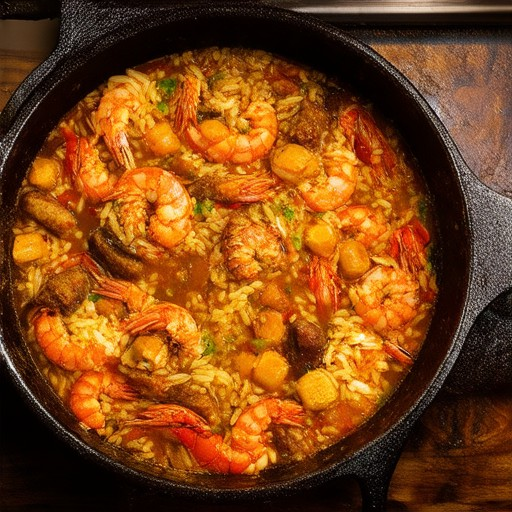
What is the Secret to a Good Jambalaya?
Jambalaya, a beloved dish in Cajun and Creole cuisine, is a flavorful blend of rice, meat, and spices. The key to crafting a perfect jambalaya lies in balancing acidity, umami, and aromatic spices.
Ingredients:
- Rice
- Meat or seafood (such as chicken, shrimp, or andouille sausage)
- Tomatoes
- Bell peppers
- Onion
- Garlic
- Cooking oil
- Spices (cayenne, paprika, garlic powder, onion powder, and sugar or honey)
- Hot sauce or vinegar for acidity
- Bay leaves
- Thyme
- Fresh parsley
Instructions:
- Render fat from the meat or cook the rice separately if needed.
- Sauté onions, peppers, and garlic in oil until softened.
- Add tomatoes, spices, and herbs, simmering until thickened.
- Mix in cooked rice and meat, stirring well to combine.
- Add shrimp near the end for a tender texture.
- Bake uncovered at 375°F until rice is cooked through, about 30 minutes.
- Finish with fresh parsley and serve hot.
Tips:
- Use a heavy-bottomed pot for even cooking.
- Adjust spices according to your preferred heat level.
- Pair with cornbread or biscuits for a hearty meal.
Variations:
- Red Jambalaya: Add tomatoes and tomato paste.
- White Jambalaya: Use broth instead of tomatoes.
- Add different meats or seafood for variety.
By mastering these elements, you can create a jambalaya that truly captures the essence of Cajun and Creole flavors, making it a standout dish for any occasion.
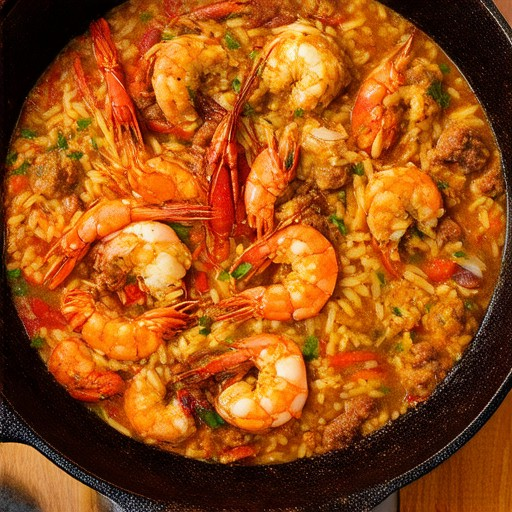
What are the two types of jambalaya?
Jambalaya is a popular rice dish with rich cultural origins, and there are primarily two distinct varieties:
- Cajun Jambalaya: Originating from the bayous of Louisiana, this version typically features ingredients like andouille sausage, bell peppers, onions, and tomatoes. It’s known for its bold flavors and hearty texture.
- Creole Jambalaya: Influenced by Spanish, French, and African cuisines, Creole jambalaya often includes tomatoes, shrimp, and a blend of spices. It tends to be more complex and aromatic compared to the Cajun style.
Both styles highlight the versatility of jambalaya, offering something for every taste preference. Whether you prefer the smoky, savory Cajun version or the vibrant, spicy Creole style, jambalaya remains a beloved dish across many cultures.
For more detailed recipes and culinary insights, visit our main site or explore similar dishes on our competitor’s page .
What is the Holy Trinity of Jambalaya?
The holy trinity of jambalaya consists of three essential ingredients that form the foundation of this iconic Creole dish. These ingredients are:
- Celery
- Onion
- Green bell pepper
These vegetables are considered the backbone of jambalaya, providing a flavorful base that enhances the dish’s taste and texture. While green bell peppers are the standard addition, some cooks also incorporate red and yellow bell peppers for added color and spice.
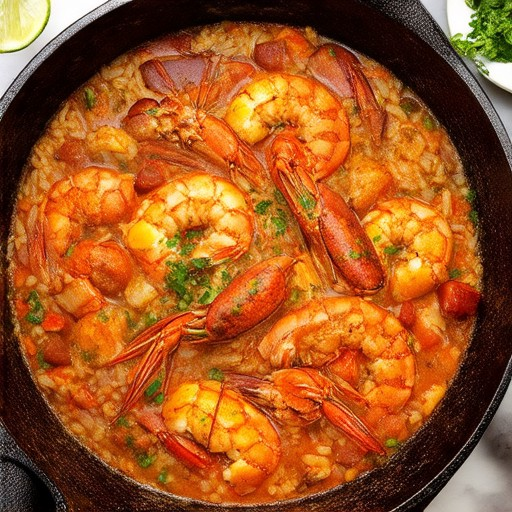
Shrimp Creole vs. Shrimp Jambalaya
Both shrimp creole and shrimp jambalaya are classic Louisiana dishes that feature shrimp as the primary ingredient. However, they have distinct differences in their preparation, flavors, and textures.
- Base and Sauce: – Shrimp Creole: Typically starts with a dark, rich roux (a mixture of fat and flour) and a tomato-based sauce. It has a tangy, acidic flavor due to the tomatoes and green onions. – Shrimp Jambalaya: Uses a red sauce, often made with tomatoes, peppers, onions, and garlic. The sauce is spicier and more robust compared to creole.
- Main Ingredients: – Shrimp Creole: Usually consists of shrimp, onions, bell peppers, celery, garlic, and tomatoes. It may also include okra for thickness and flavor. – Shrimp Jambalaya: Often includes shrimp, chicken, sausage, and rice. Rice is a key component, as it is cooked in the sauce, making it a hearty, filling dish.
- Preparation Method: – Shrimp Creole: Is a type of stew that is simmered together in one pot. It’s usually served over rice. – Shrimp Jambalaya: Involves layering rice at the bottom of the pot, then adding the shrimp and other ingredients on top. It’s baked until the rice absorbs the sauce and the dish is fully cooked.
- Serving Style: – Shrimp Creole: Can be eaten alone or over rice. It’s known for its bold flavors and thick consistency. – Shrimp Jambalaya: Is traditionally served over rice, making it a more substantial meal. The combination of rice and sauce creates a satisfying texture.
Conclusion: While both dishes are rich and flavorful, shrimp creole is a spicy stew with a tomato base, and shrimp jambalaya is a layered rice dish with a red sauce. Both are excellent examples of Louisiana cuisine, showcasing the state’s love for bold flavors and creative cooking techniques.

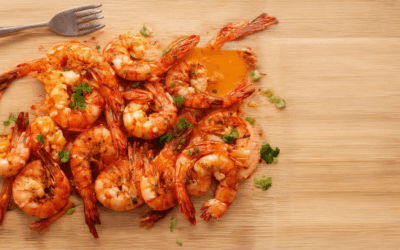
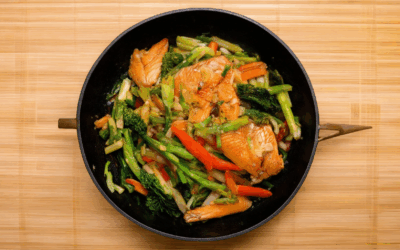
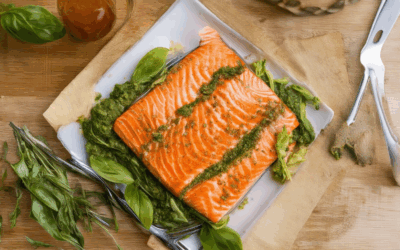
0 Comments